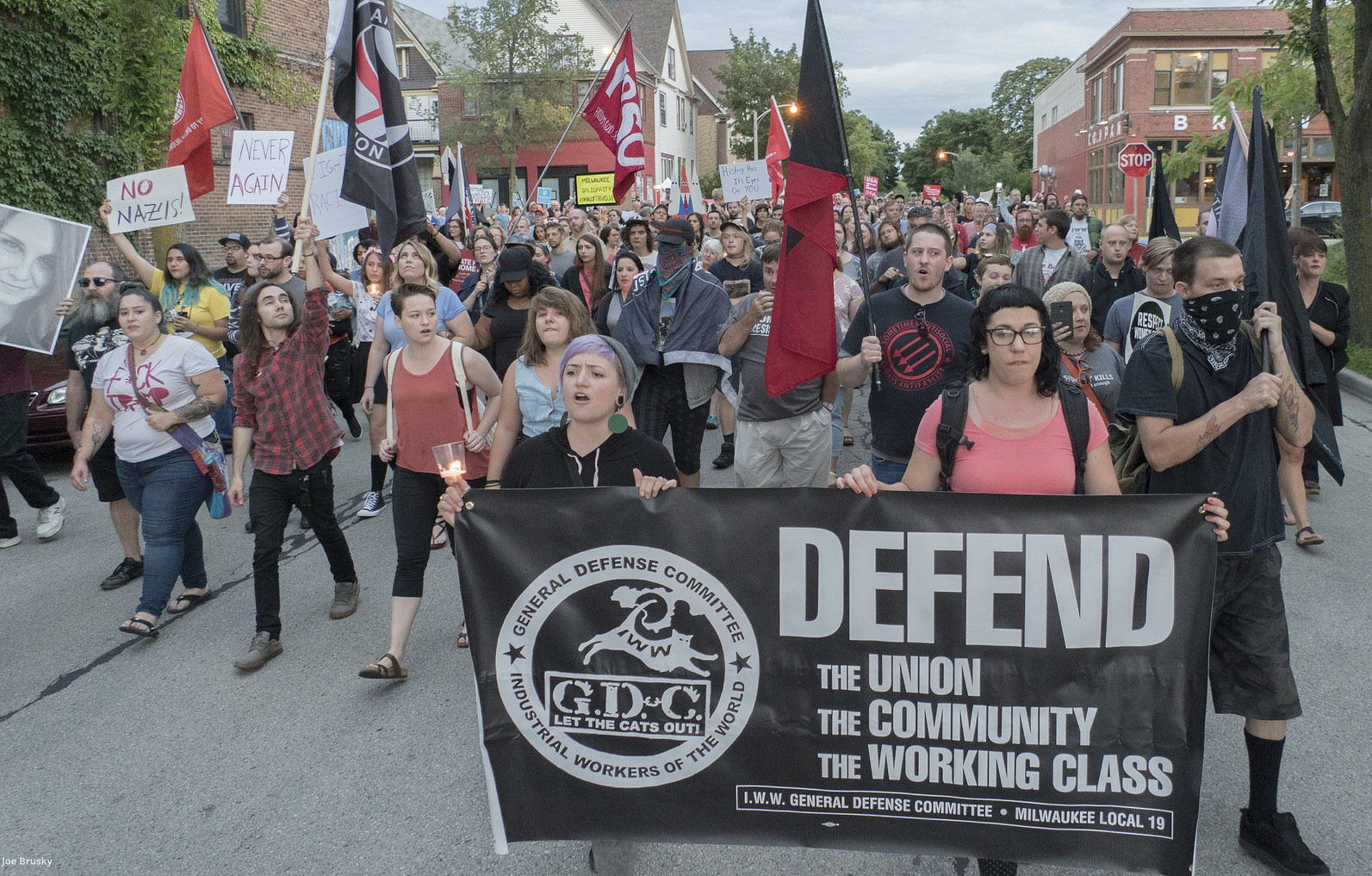In Charlottesville, Virginia, when a car ploughed into a crowd of anti-racist activists killing Heather Heyer and injuring 19 others, many people linked that tactic to recent terror attacks, especially in Europe. Indeed, driving a truck into a crowd of protesters has become a favoured tactic for some who seek to murder. So much so that even Quebec City’s Carnival parade erected barriers to lower the potential of this happening last February.
“The attacks in Charlottesville show the violence of racism and white supremacy,” read a statement from the Teamsters Joint Council 16 in New York City. “We stand with Charlottesville and honour the memory of Heather Heyer. We also know that our union and the labour movement must lead in the fight against white supremacy. Those in power have always sought to divide workers based on race. Unions are the voice of equality and justice in the workplace. It is our responsibility to unite the working class for racial and economic justice.”
For labour activists, seeing a car drive into protesters is a strong reminder of the routine danger that workers face when they walk a picket line. That, when your body is on the line to force a company to slow down or close, the likelihood of injury from a car driving into you is very high.
Back in 2006, when Ontario college workers were on province-wide strike, John Stammers was killed by a driver while he was on the picket line at Centennial College. The driver was not charged.
Cars are dangerous, especially when used as a weapon. As protests have grown in the United States, some lawmakers are exploring ways to legalize injury by car. Republican lawmakers have considered legislation that would make it legal to hit protesters who are blocking a street, if the consequences of that action were “unintentional” or “accidental.” In North Dakota, a proposal defeated by 41-50, actually stated: “A driver of a motor vehicle who negligently causes injury or death to an individual obstructing vehicular traffic on a public road, street, or highway may not be held liable for any damages.”
This has triggered Republicans in other states to try to pass similar pieces of legislation. In North Carolina, legislation passed that would shield drivers who exercised “due care” but still hit protesters.
There’s no doubt that these laws are being passed with protests coordinated by Black Lives Matter and other civil rights movements in mind. Criminalizing and crushing dissent through any means necessary is nothing new.
Fascism is nothing new either, and the connection between the rise in the alt-right and the power of organized labour goes far beyond the similarities of tactics employed by individuals who seek to cause harm. Labour’s principal role in a democratic society is to be a counterbalancing political force to power, both the economic power of the bosses and the political power of the state.
Trade unions were at the epicentre of the fight against fascism in Europe in the 1930s. As a result, dictators outlawed independent unions. Mussolini took over trade unions and turned them into state-run fascist entities. By 1935, four million Italian workers were represented by the Fascist Trade Unions. Controlling workers through their governing bodies helped to undercut anti-fascist organizing.
Crushing trade unions was also critical to Hitler’s rise. Even before the Nazis were installed as the state government in July 1933, he jailed union leaders, had his police take over union offices and seized their assets. He forced them to merge with the Nazi party, ending independent trade unionism.
As a democratic and independent voice of workers, it’s obvious why the labour movement poses a threat to leaders with dictatorial tendencies. With resources, internal democratic structures, access to people and communities and various platforms, they are a critical node in the fight against fascism.
But it’s been social movements, especially Black Lives Matter that have been doing the heaviest lifting in the current iteration of this struggle. With union density of just 10.4 per cent, perhaps it’s unfair to expect the labour movement to be the standard bearer against fascism.
Mass mobilizations against fascism, both expressions of it in the streets and within the White House remind us that organized resistance remains our best chance at defending democracy and confronting state power. This is as true today as it ever has been. While AFL-CIO representatives Richard Trumka and Thea Lee resigned yesterday from Donald Trump’s manufacturing council, the question must be asked: why were they ever there in the first place?
Too much of organized labour has forgotten that the primary role of unions goes far beyond dues-paying members. That people power manifests in various ways, but none so powerful, resourced and broad as the labour movement. Trade unionists should be arm-in-arm with Black Lives Matter and anti-fascist organizations. They should be supplying advice and tools to topple monuments. They should co-ordinate food, sound systems and a political analysis that cuts through the right-wing, divisive rhetoric that has seemingly confused some among the working class.
In Canada, where union density remains much higher, at almost 30 per cent, the responsibility that trade unionists have is even greater. They should be linking arms with the thousands of newly arrived refugees, helping with relief efforts and volunteering their resources and time. They should be paying for anti-racist organizers. They should be boosting these messages in the mainstream press.
They need to hold the spot in social democracy that they’re supposed to hold.
Photo: Joe Brusky/flickr
Like this article? Please chip in to keep stories like these coming.




